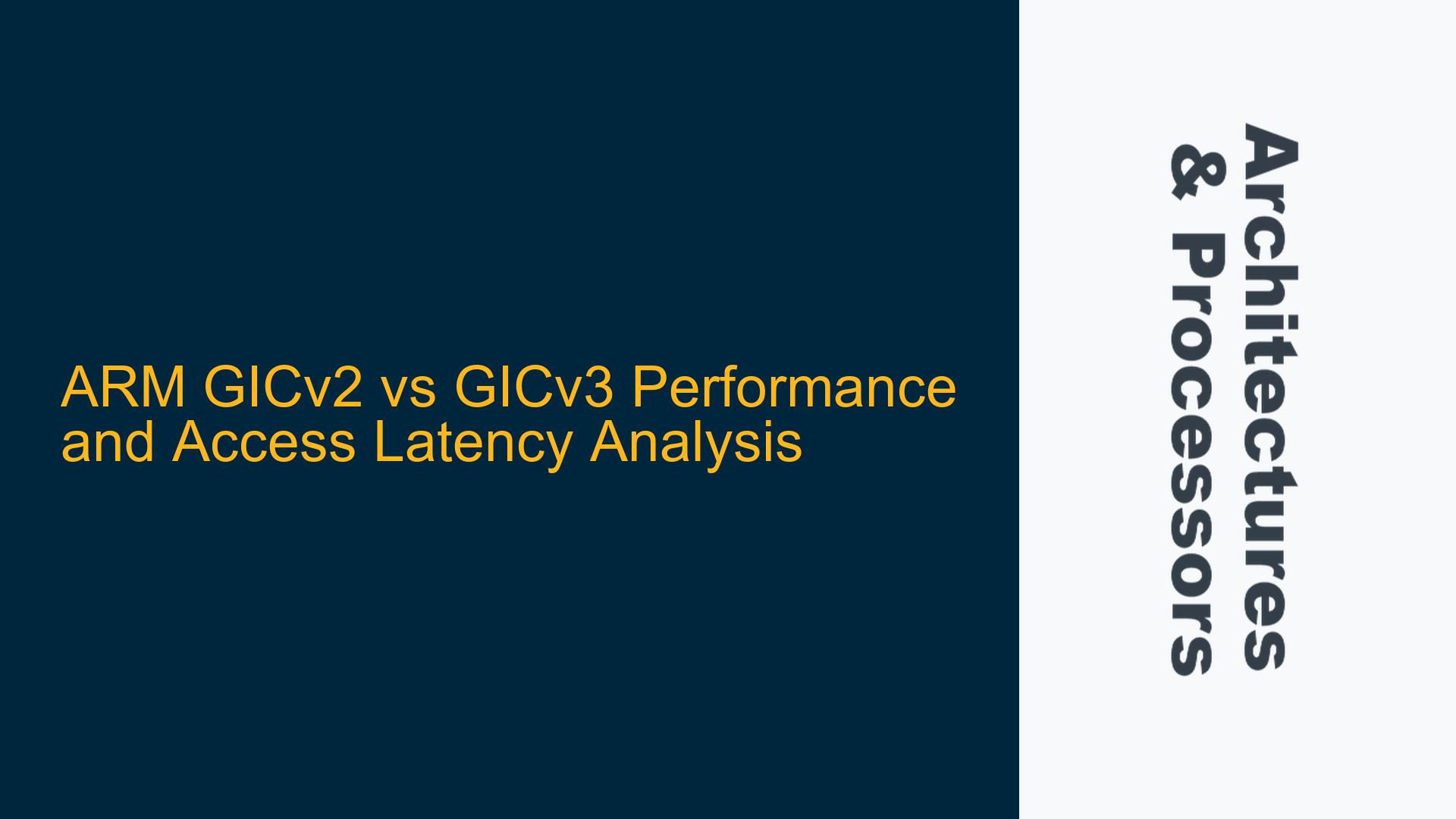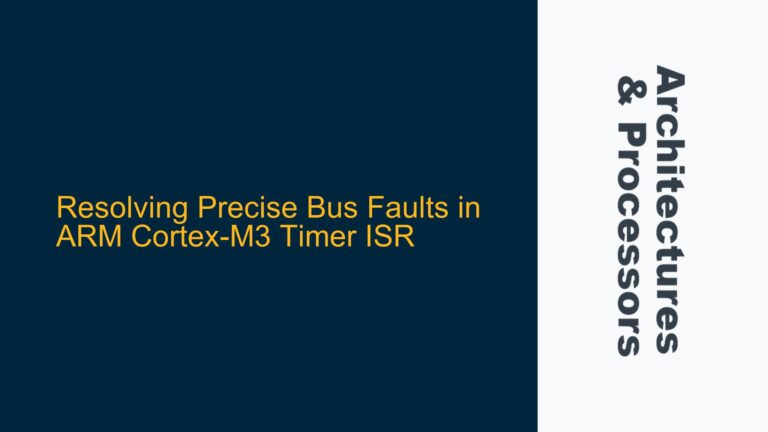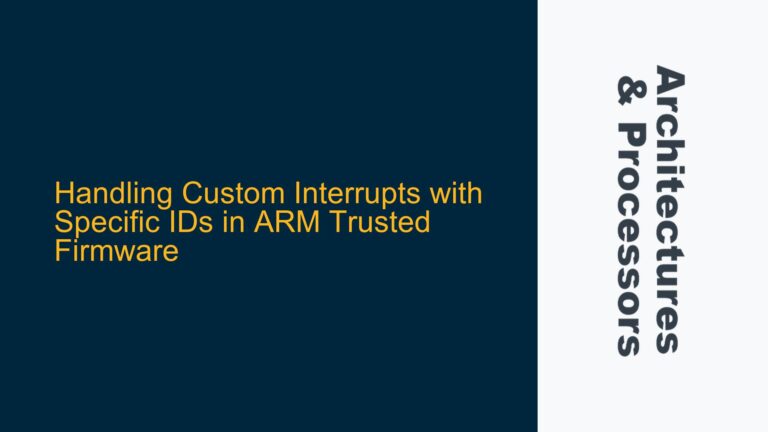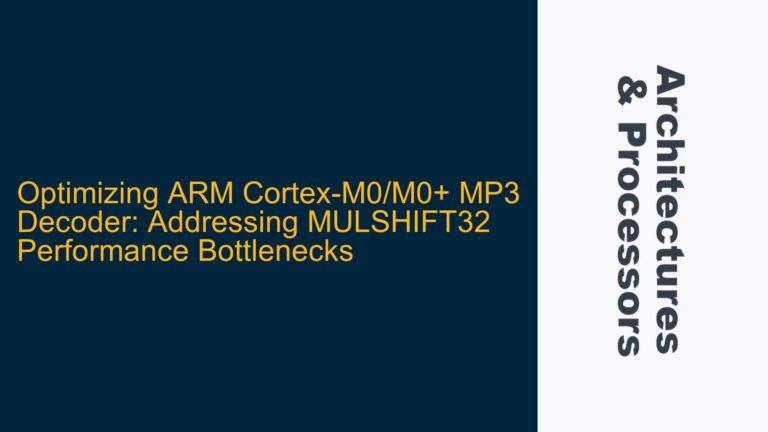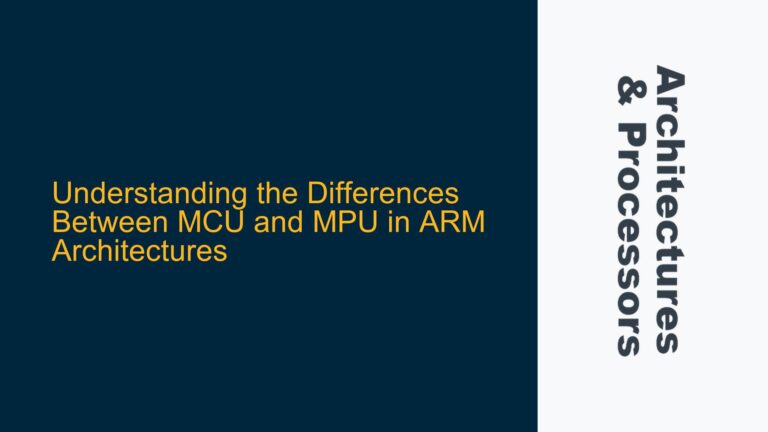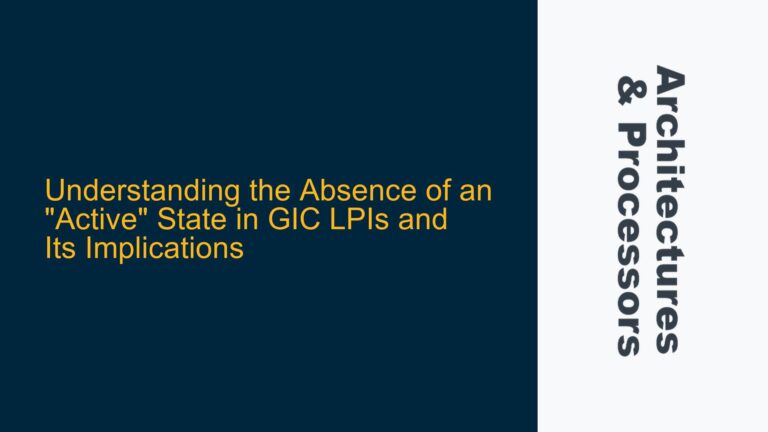GICv3 System Register Access vs GICv2 Memory-Mapped Interface Performance
The transition from GICv2 to GICv3 introduced significant architectural changes, particularly in how the CPU interfaces with the Generic Interrupt Controller (GIC). One of the most notable changes is the shift from a memory-mapped interface in GICv2 to a system register-based interface in GICv3. This change has implications for both performance and scalability, especially in systems where interrupt handling latency is critical.
In GICv2, the CPU interface registers are memory-mapped, meaning that the CPU accesses them through load/store instructions to specific memory addresses. This approach requires the CPU to perform a memory transaction, which involves sending a request over the bus to the GIC, waiting for the response, and then processing the data. The latency of this operation depends on several factors, including the distance between the CPU and the GIC, the bus architecture, and the current load on the memory system.
In contrast, GICv3 replaces the memory-mapped interface with system registers accessed via the MSR (Move to System Register) and MRS (Move from System Register) instructions. These instructions allow the CPU to directly access the GIC’s CPU interface registers without involving the memory system. This direct access can significantly reduce latency, as it eliminates the need for bus transactions and memory accesses.
The performance advantage of GICv3’s system register interface becomes particularly evident in interrupt handling. When an interrupt occurs, the GICv3 forwards a packet to the CPU core containing all the necessary information about the interrupt, such as its ID, group, and priority. When the CPU acknowledges the interrupt by reading the ICC_IARx_EL1 register, it already has the interrupt ID available locally, allowing for faster processing. In GICv2, the CPU must perform a memory read to the GIC’s CPU interface register to obtain the interrupt ID, which introduces additional latency.
The exact performance difference between GICv2 and GICv3 depends on the specific implementation and system design. However, the architectural advantages of GICv3 suggest that its system register interface is generally faster than GICv2’s memory-mapped interface, particularly in systems with high interrupt handling demands.
Memory System Contention and GICv2 Access Latency Variability
The performance of GICv2’s memory-mapped interface is heavily influenced by the memory system’s design and the current load on the system. In a typical system, the GICv2 CPU interface and Distributor registers are mapped to device memory, which has specific attributes such as non-cacheability and strict ordering. These attributes ensure that accesses to the GIC registers are performed in a predictable manner, but they also mean that the latency of these accesses can vary depending on the state of the memory system.
When the CPU accesses the GICv2 CPU interface registers, it must traverse the memory hierarchy, which may include multiple levels of buses, bridges, and interconnects. The latency of these accesses can be affected by several factors, including the distance between the CPU and the GIC, the presence of other devices competing for memory bandwidth, and the current load on the memory controllers. In a heavily loaded system, contention for memory resources can significantly increase the latency of GICv2 register accesses.
In contrast, the GICv2 Distributor registers are typically accessed less frequently than the CPU interface registers. The Distributor is responsible for managing the configuration and routing of interrupts, and these operations are usually performed during system initialization or when reconfiguring interrupts. As a result, the latency of Distributor accesses is less critical to overall system performance, although it can still be affected by memory system contention.
The variability in GICv2 access latency can make it challenging to predict the performance of interrupt handling in real-time systems. In systems with strict timing requirements, this variability can lead to jitter in interrupt response times, which may be unacceptable for certain applications. The GICv3 system register interface, with its more predictable access latency, can help mitigate this issue.
Optimizing Interrupt Handling with GICv3 System Registers and Cache Management
To fully leverage the performance advantages of GICv3’s system register interface, software must be designed to take advantage of the architectural improvements. One key aspect of this is the use of the ICC_IARx_EL1 register to acknowledge interrupts. In GICv3, this register provides the CPU with immediate access to the interrupt ID, allowing for faster interrupt handling. Software should be structured to minimize the time between reading the ICC_IARx_EL1 register and starting the interrupt service routine (ISR).
Another important consideration is the management of the CPU’s cache and memory system. Although GICv3’s system register interface reduces the need for memory accesses during interrupt handling, other parts of the system may still rely on memory-mapped I/O. In these cases, proper cache management is essential to ensure that memory accesses do not introduce unnecessary latency.
For example, in systems where the GICv3 Distributor is still memory-mapped, software should ensure that accesses to the Distributor registers are performed with the appropriate memory attributes. This may involve configuring the memory system to treat these accesses as non-cacheable and strictly ordered, to prevent reordering or caching that could lead to unpredictable behavior.
In addition, software should be aware of the potential for contention in the memory system and take steps to minimize its impact. This may involve prioritizing certain memory transactions, or using techniques such as prefetching to reduce the latency of critical memory accesses.
Finally, software should be designed to take advantage of the scalability improvements in GICv3. The system register interface allows for more efficient handling of interrupts in multi-core systems, where multiple CPUs may be accessing the GIC simultaneously. By using the GICv3 architecture’s support for affinity routing and interrupt grouping, software can ensure that interrupts are routed to the most appropriate CPU, reducing contention and improving overall system performance.
In conclusion, the transition from GICv2 to GICv3 represents a significant improvement in interrupt handling performance, particularly in systems with high interrupt rates or strict timing requirements. By understanding the architectural differences between GICv2 and GICv3, and by designing software to take advantage of the new features in GICv3, developers can optimize their systems for faster and more predictable interrupt handling.
